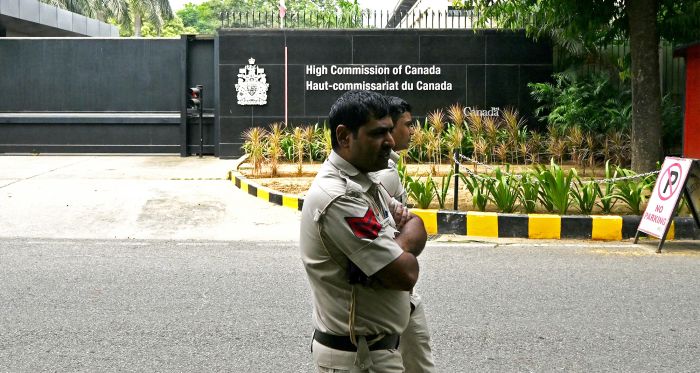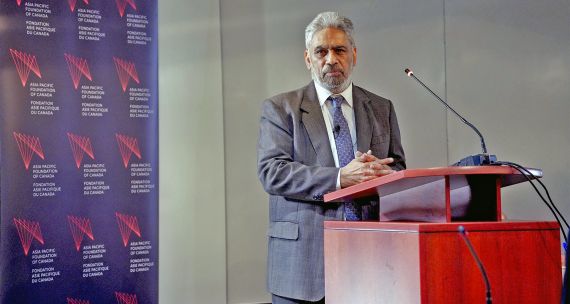La version française est à venir.
Canada-India relations sharply deteriorated in September 2023 when former Prime Minister Justin Trudeau linked the murder of Canadian Khalistani activist Hardeep Singh Nijjar to Indian state agents. The crisis deepened in October 2024 when Ottawa accused Indian diplomats of being complicit in criminal activities, including intimidation, extortion, and murder. New Delhi rejected these claims, labelling Canada a “safe haven” for extremism and anti-India activities. This unprecedented crisis in modern diplomatic history was exacerbated by further allegations of “foreign interference” by Indian agents in Canada’s electoral processes.
The diplomatic row saw both countries expelling top diplomats, led to a pause in bilateral free trade negotiations, and severely impacted the higher education corridor and public perceptions on both sides of the relationship. However, as Ottawa transitions to new political leadership amid an escalating U.S. trade war and existential threats from President Donald Trump, it must find constructive ways to strengthen partnerships and diversify trade with like-minded nations. This is especially critical with rising powers such as India, which is set to play an increasingly influential role in the Indo-Pacific and the evolving geopolitical and global economic landscape.
India has interests of its own in collaborating with Canada more closely as it navigates uncertainties under the Trump administration. While New Delhi has so far managed its relations with Washington and the threat of tariffs more effectively than Canada, its high tariff wall, such as on agricultural products, is a continuing irritant in trade ties with the U.S. It also remains wary of a potential Trump-led rapprochement between Washington and Beijing – its foremost regional rival with which it shares a disputed 3,488-kilometre border. Despite diplomatic tensions, Canada and India have shared strategic interests in deepening economic ties, as well as enhancing co-operation on peace and security issues in the Indo-Pacific — particularly as China's regional assertiveness rises and uncertainty looms over how the U.S. might respond to regional security challenges.
However, to develop a roadmap for a ‘reset’ in bilateral relations and to bolster the strategic partnership, four key elements of the relationship would need to be reconsidered.
1. National Security at the Core: Overcoming a Legacy of Mistrust
The most significant challenge in Canada-India relations stems from each country’s concerns over perceived threats to their national security and sovereignty. While the Nijjar murder case presents a shocking affront to Canada’s sovereignty, New Delhi raises alarms over what it perceives as one of its gravest national security threats: Khalistani extremism on Canadian soil, a movement that advocates for an independent Sikh state, Khalistan, to be carved out of the Indian state of Punjab.
While Nijjar’s murder amplified these mutual security concerns, the deep mistrust between the two countries dates back to the 1980s — particularly the 1985 Air India bombings, which killed 331 people, most of them Canadians of Indian origin. This shared tragedy could have united both nations, but the relationship remains mired in mistrust rooted in India’s perception that Canada failed to prevent the Air India attack, mishandled the investigation, and responded with insufficient empathy and accountability — concerns also noted in a 2010 Canadian public inquiry report. Moving forward, forging a more resilient relationship will be challenging without a sense of justice and accountability that satisfies both sides and fosters a shared approach to tackling extremism through mutual co-operation.
Like Canada, other Five Eyes nations — including the U.S., U.K., and Australia — have faced tensions with India over pro-Khalistan activism among their diaspora groups. However, unlike Canada, they have all managed to maintain strong partnerships despite these challenges. For instance, as India-U.S. ties have strengthened in recent years, the unsealing of a ‘murder-for-hire’ indictment against an Indian official — linked to a foiled attempt to target a Khalistani activist on U.S. soil — did not derail the deepening partnership. Instead, New Delhi launched a high-level probe into the matter while national security and law enforcement agencies on both sides worked behind the scenes.
Similar measures on the Indian side to address allegations in the Nijjar case are critical for restoring normal bilateral relations. Both nations must recognize that violence and extremism are shared challenges requiring joint solutions and reinforced law enforcement co-operation. In this context, the participation of the Director of the Canadian Security Intelligence Service (CSIS) at the recent conclave of intelligence chiefs from around the world, held on the sidelines of the Raisina Dialogue — India’s largest annual security conference — was a welcome development.
Furthermore, strengthening the Joint Working Group on Counter Terrorism — first established in 1997 as a bilateral initiative — could serve as an effective platform for collaboration. New Delhi will also be closely watching for signals from the new government in Ottawa on the messaging around the upcoming 40th anniversary of the Air India bombings in June. Such confidence-building measures would underscore the potential for an enhanced partnership between the two countries.
2. Canada’s Political Transition: Seizing the Moment for a Change in Tone
With the departure of former prime minister Justin Trudeau and a political transition underway in Ottawa, a potential opportunity has emerged for a reset in Canada-India relations. Given that Trudeau's leadership was widely perceived as a key roadblock in Indian media discussions on bilateral ties, his successor has an opportunity to set a fresh tone in relations with India.
With Canadian federal elections set for April 28, both Liberal Party leader Mark Carney and his Conservative Party rival, Pierre Poilievre, have signalled interest in recalibrating ties with India. Poilievre has urged for a more “professional relationship” with India – “the world’s biggest democracy.” Carney has emphasized the need for Canada to expand its relations, especially free-trade opportunities, with “like-minded” countries like India amid a historic trade war with the U.S.
The significance of this opportunity for a reset has not been lost on New Delhi. A spokesperson for India’s Ministry of External Affairs stated in March that India hopes to rebuild its ties with Canada based on “mutual trust and sensitivity.” However, this moment for improved ties cannot be expected to yield automatic results; it must be strategically leveraged by both sides to achieve substantive progress. What is crucial, though, is that this shift allows for a reset in tone, even if not immediately in substance. Much will depend on how the leaders of both countries navigate their subsequent diplomatic encounters. For instance, with Canada set to host the upcoming G7 Leaders’ Summit in June, India will be watching closely, particularly regarding the handling of invitations — especially if key non-members are invited.
Furthermore, reinstating high commissioners — who were expelled by both sides in October 2024 — would be a crucial step forward. Recent media reports suggest that New Delhi is considering such a move, signalling the first step toward thawing frozen diplomatic relations, although the full restoration of the respective missions may not be imminent. Indeed, the process of resetting relations is likely to be slow and gradual, requiring both a long-term vision and a series of intermediate confidence-building measures.
3. Trade, Investment, and Education: Unlocking Economic Potential
Despite modest progress in institutionalizing economic ties, trade and investment between Canada and India remain strong, with India ranking as Canada’s 10th largest trading partner in 2022. Negotiations for a bilateral free trade agreement began in 2010, later shifting in 2022 to a more limited Early Progress Trade Agreement (EPTA). However, Ottawa paused trade talks in September 2023, shortly before Trudeau’s statement on the Nijjar killing.
Contrary to expectations, bilateral trade has remained steady, even growing modestly post-Nijjar allegations. Two-way trade rose from C$880 million in March 2023 to C$923 million in March 2024. While foreign direct investment (FDI) from Canada to India declined from C$5.3 billion in 2022 to C$3.9 billion in 2023, Canadian foreign institutional investments — including pension funds, mutual funds, and other financial assets — have surged over the past decade, rising tenfold from C$5 billion in 2014 to over C$55 billion in the first half of 2023, especially as Canadian pension funds increasingly diversified beyond China. Notably, despite bilateral tensions, Canadian pension fund investments in India grew from C$28 million in the third quarter of 2023 to C$111 million in the fourth quarter.
Education and research partnerships have long been pillars of Canada-India ties, with Indian students forming the largest international student cohort in Canada in 2023. However, recent changes in Canadian immigration policy — including cuts to student visas by 35 per cent in 2024 and an additional 10 per cent reduction planned in 2025 — alongside the bilateral diplomatic row and rising living costs in Canada, have significantly impacted the Canada-India higher education corridor. Indian applications for study permits plummeted by 40 per cent in 2023 compared to the previous year.
The broader landscape of educational and research partnerships also appears to be under strain, with anecdotal evidence suggesting waning interest among researchers and institutions in forging new collaborations. Institutions such as the binational Shastri Indo-Canadian Institute — established in 1968 to promote education, research, and cultural exchange — have faced severe funding challenges in recent years, further aggravated by diplomatic tensions.
Moving forward, as Canadian universities navigate the challenge of declining international student enrollment, there should be a stronger emphasis on deepening research collaborations, which are not only vital for bilateral ties but also for fostering innovation and global competitiveness. Additionally, Canadian universities should explore opportunities within India’s evolving regulatory framework, which, since 2023, allows foreign institutions to establish campuses in India.
While bilateral co-operation continues, increased subnational-level engagement — particularly in areas such as agriculture, trade, and education — between Canadian provinces and Indian states could further enhance collaboration. Regional governments often have a greater stake in strengthening these ties.
Finally, Canada must prepare for the possibility that, if EPTA negotiations resume in the near future, they may not continue in the same form as when discussions were paused. Structural shifts in the global economic and political order, alongside evolving national priorities, will likely reshape the agenda. Future trade talks would need to focus more on economic security issues such as supply chain resilience, energy security, and mitigating shared geopolitical risks.
4. Boosting Mutual Competence and Strengthening Pathways for Future Engagement
Building a deeper strategic partnership requires sustained efforts to foster mutual understanding and expertise — areas where significant gaps remain on both sides. Resetting the recent adversarial media narrative, combating disinformation, and strengthening civil society engagement will be critical steps in this direction. Trust-building and competence enhancement also demand a greater appreciation of each other’s interests, capabilities, and untapped synergies for co-operation.
While Ottawa acknowledged India’s potential in its 2022 Indo-Pacific Strategy — highlighting the South Asian nation’s "growing strategic, economic, and demographic importance in the Indo-Pacific" — a deeper understanding of India’s rising power and its foreign policy, rooted in the principle of ‘strategic autonomy,’ is necessary.
New Delhi has historically resisted traditional security alliances, seeking to preserve its strategic independence while maximizing partnerships across the globe. As a result, India has strengthened ties with the U.S. while maintaining its longstanding relations with Russia – and expanding its partnerships with the E.U., the Middle East, Israel, Japan, Australia, and beyond. Despite recent efforts to normalize border tensions with Beijing, New Delhi remains apprehensive of China, which has become increasingly assertive in the region. Their disputed border remains a key security concern for India and has helped reinforce an India-U.S. strategic partnership built on shared concerns around China.
New Delhi also advocates for a ‘multipolar’ world order, where rising powers like itself play a more significant role. While India seeks a greater role in shaping the emerging world order, it also aims to preserve key elements of the existing system, such as multilateral institutions and a rules-based order, setting it apart from more revisionist powers such as China and Russia. The South Asian nation has also emerged as the fifth-largest economy and is expected to become the world’s third-largest economy by 2027. Furthermore, despite fears of democratic backsliding, India remains the world’s largest democracy, driven by the vibrancy and dynamism of its 1.4 billion people — the largest population in the world.
In the context of shifting global geopolitics and its own foreign policy objectives, New Delhi stands to benefit by redefining its approach to Canada — not just as a country in the shadow of the U.S., but as a reliable partner offering the vital resources, technology, and investment capital that India needs to sustain economic growth and advance its manufacturing ambitions. For instance, India seeks critical minerals and other resources for its manufacturing and energy transition needs – for which it currently relies heavily on China, raising its national security concerns. This thirst for critical minerals presents an opportunity for Canada, with its vast mineral and natural resources, to strengthen ties with India. Furthermore, collaboration in artificial intelligence and emerging technologies could also position Canada and India as leaders, driving both innovation and global regulatory frameworks, especially as major powers retreat from global rules-making efforts.
Conclusion
As Canada re-evaluates its core foreign policy assumptions, both Ottawa and New Delhi can gain significantly by working together to address shared challenges in today’s shifting global order. Rebuilding trust will require confronting difficult truths on both sides — and a commitment to managing differences without letting them define the entire relationship. Other Five Eyes countries have managed to pursue strategic co-operation with India while navigating sensitive diaspora and security issues. Canada should aim to do the same, especially as it looks to diversify its global partnerships and reduce its overreliance on the United States. India, too, stands to benefit from a more constructive relationship with Canada — as a source of trusted capital, critical minerals, technology, innovation, and FDI. With both countries facing shifting geopolitical dynamics and regional uncertainty, this is a moment that must be seized. A full reset will not happen overnight. But with political leadership, renewed diplomatic engagement, and a clear-eyed understanding of each other’s priorities, Canada and India can move beyond the current impasse toward a more resilient and forward-looking partnership.






